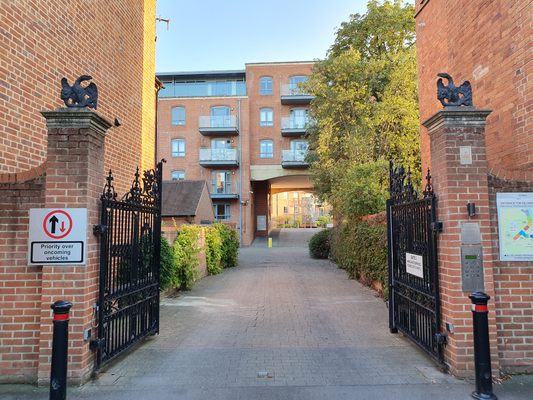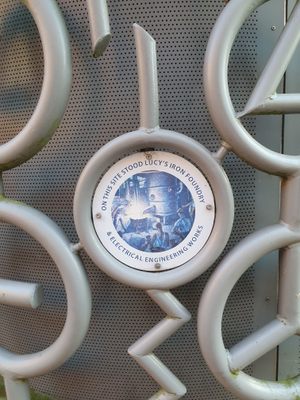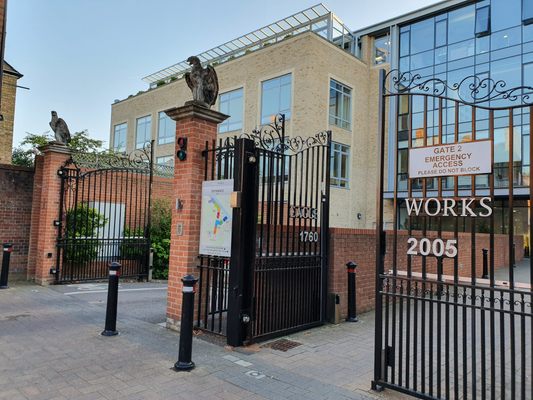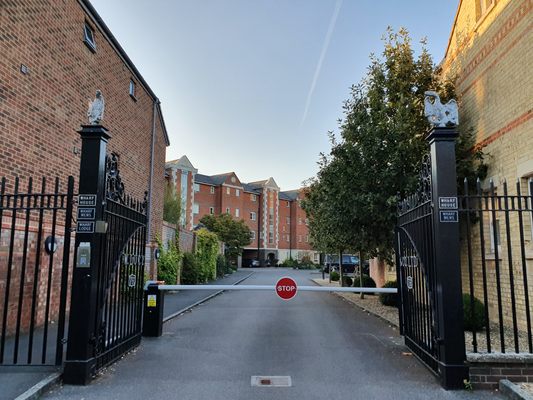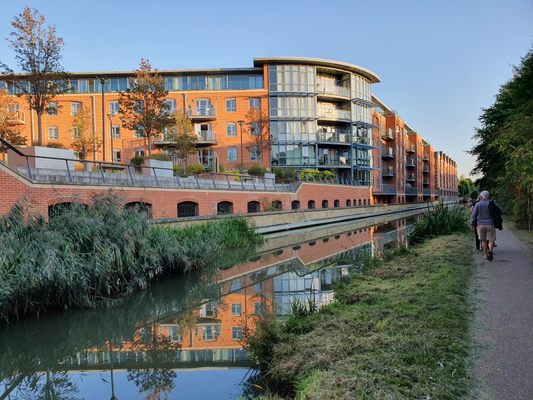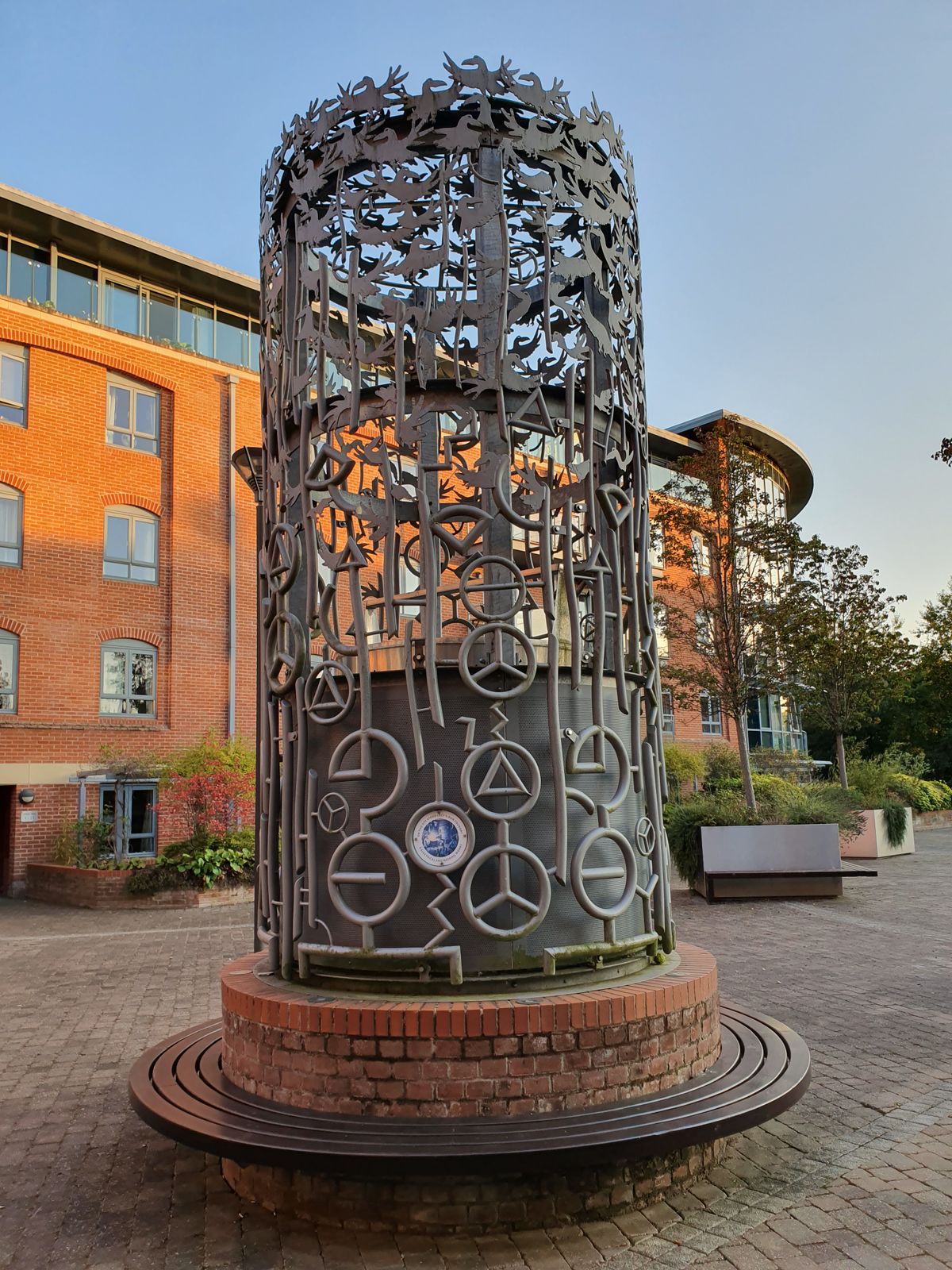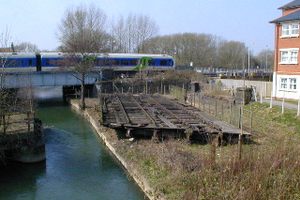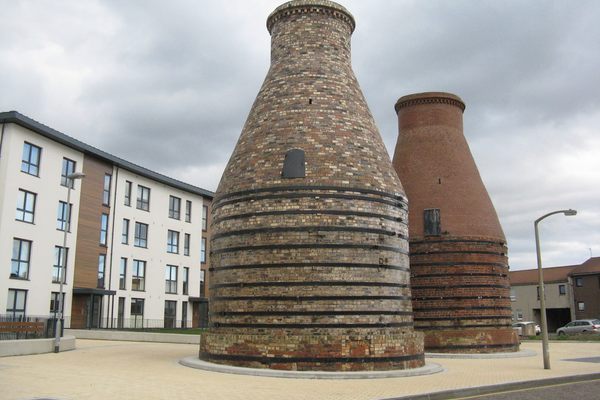About
The "city of dreaming spires" is not very famous for its manufacturing, yet there are some notable industrial relics in and around Oxford. The most well known is the auto plant producing iconic Mini Coopers (now owned by BMW), but have been many others. One of them was an ironworks that existed on the bank of the Oxford canal for almost 200 years, the memories of which are guarded by three pairs of eagles at the former factory gates.
It all began in 1812 when an Oxford ironmonger named William Carter opened his shop on High Street. (Although he claimed the business started in 1760, there is nothing to support this claim.) At the time, the canal was an important route connecting Oxford with London and the Midlands. The factory, which produced cast iron products like lamp posts, railings, gates and such, was known as Eagle Ironworks from 1828, and from 1873 as Lucy & Co, after William Lucy, one of the owners.
Later, the company also produced library stacking systems, utility plates (still visible on Oxford streets, bearing the name of “Lucy & Co, Eagle Ironworks, Oxford”) and castings for heavy steam rollers. In war times, Lucy’s switched to the manufacturing of munitions. Later in the 20th century, the Oxford factory’s main business was electrical engineering products.
Over time, the ironworks grew and acquired new production facilities elsewhere in the U.K. and across the globe. But the historic Oxford location, sandwiched between the canal, cemetery, and residential areas of the Jericho neighborhood, was no longer an ideal site for manufacturing. In 2005 the production in Oxford ceased, and within the next several years the factory buildings were demolished and new housing developments were constructed.
Nevertheless, the connection with the company, now named Lucy Group, is still very much here. The group owns the site, including the new residential buildings (named Furnace House and Foundry House), and its global headquarters are here. And, as the last vestiges of the old Eagles Ironworks, three former factory gates remain, each adorned with two eagles sitting on the gateposts.
The main entrance has the largest stone eagles, while two others have smaller cast-iron birds. An inscription on the gates reads, “Eagle Works, 1760,” a nod to the founder’s claim of when the business started. The final resting place of William Lucy, after whom the company is named, can be seen in the nearby St Sepulchre's Cemetery.
Related Tags
Know Before You Go
The main entrance is at Walton Well Road near Kingston Road. The others are at Walton Well Road near Longworth Road, and at Allam Street.
Community Contributors
Added By
Published
September 26, 2019
